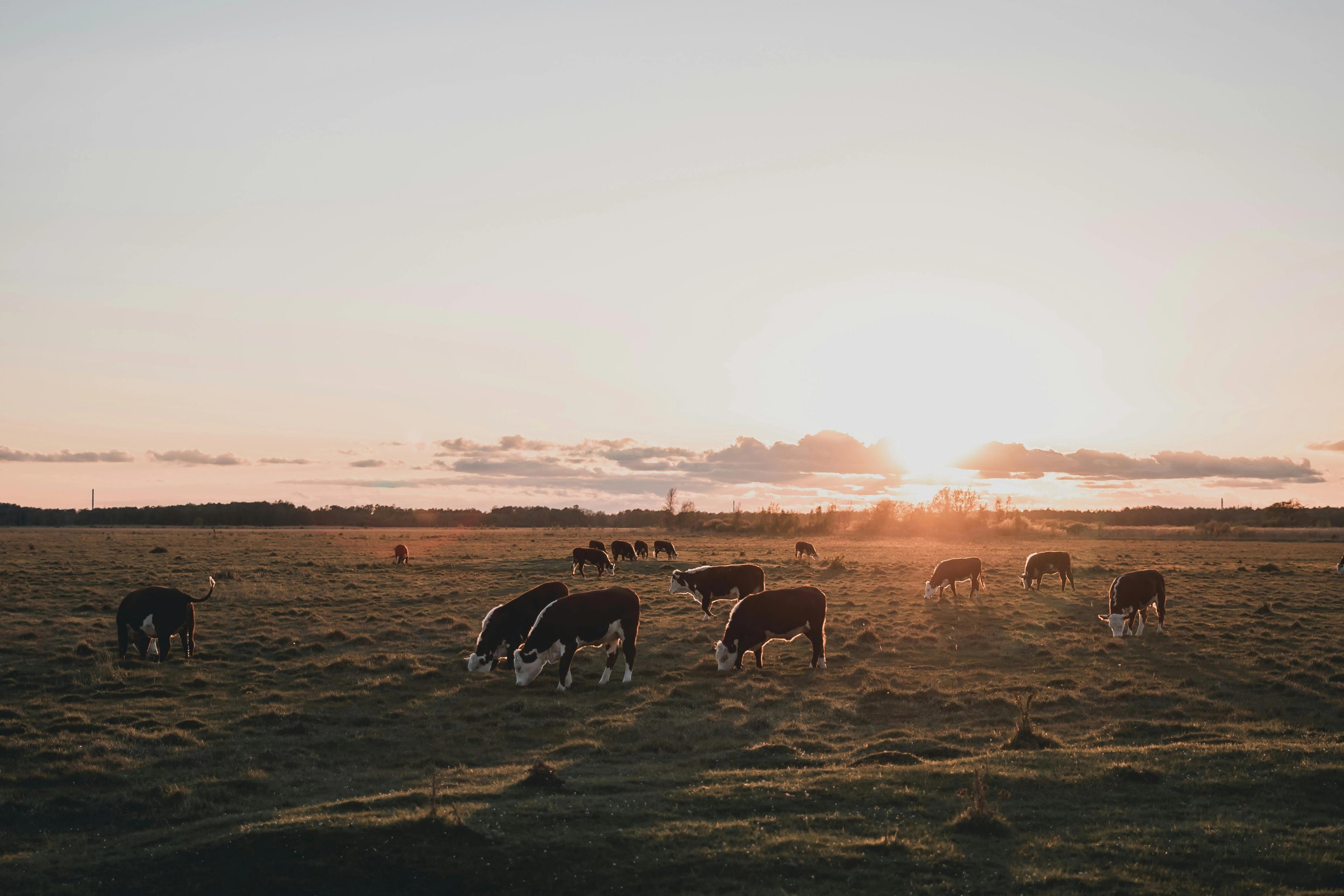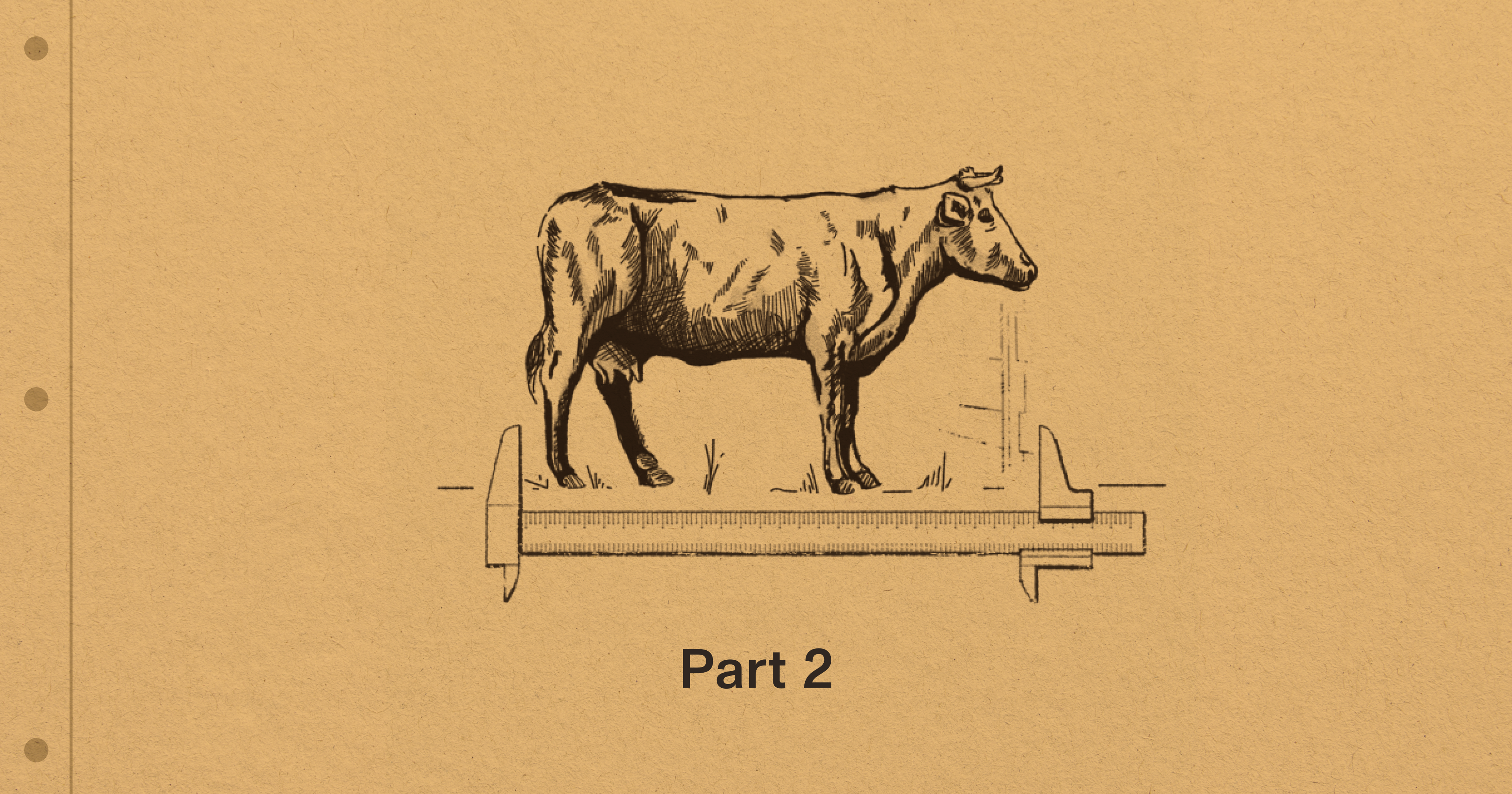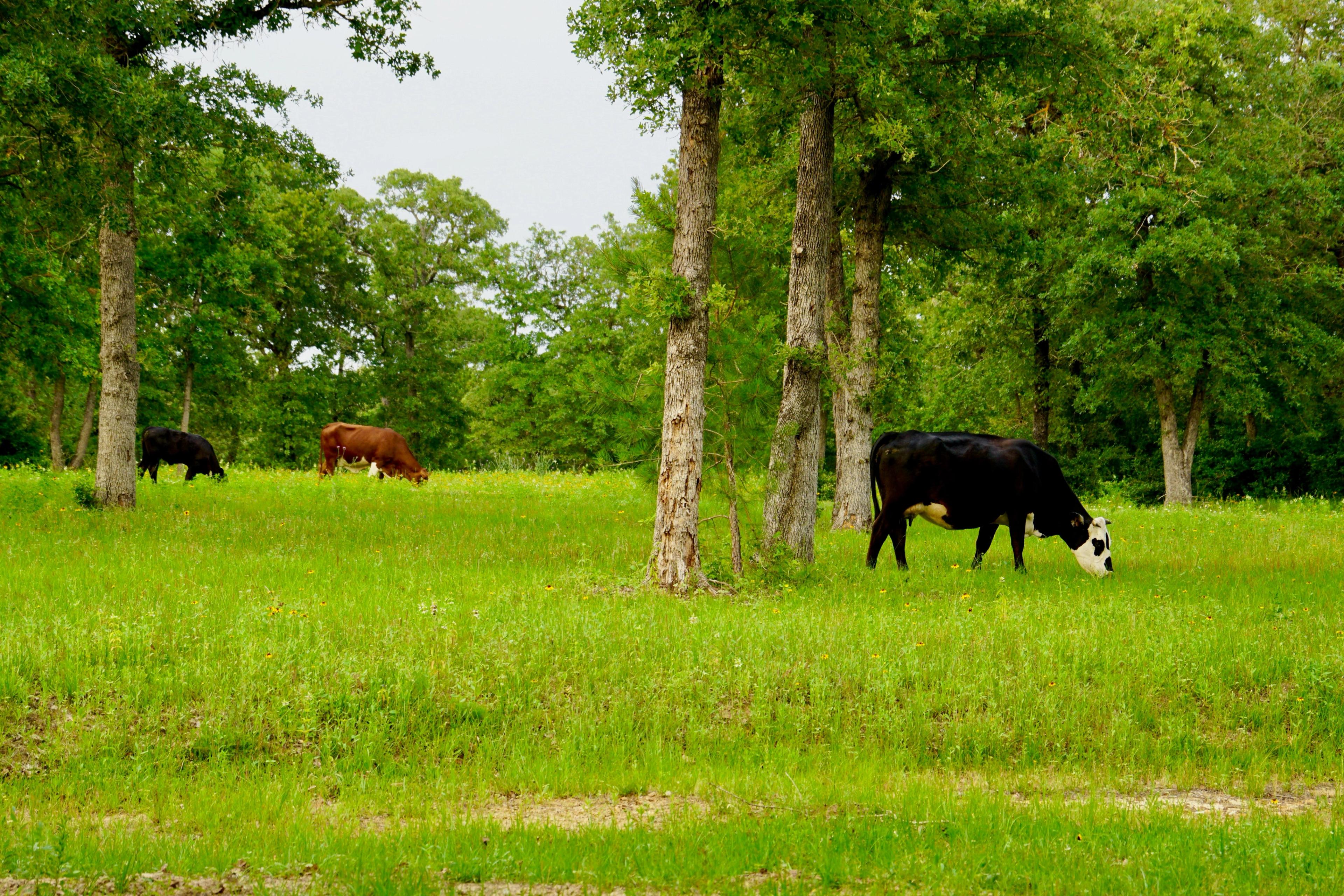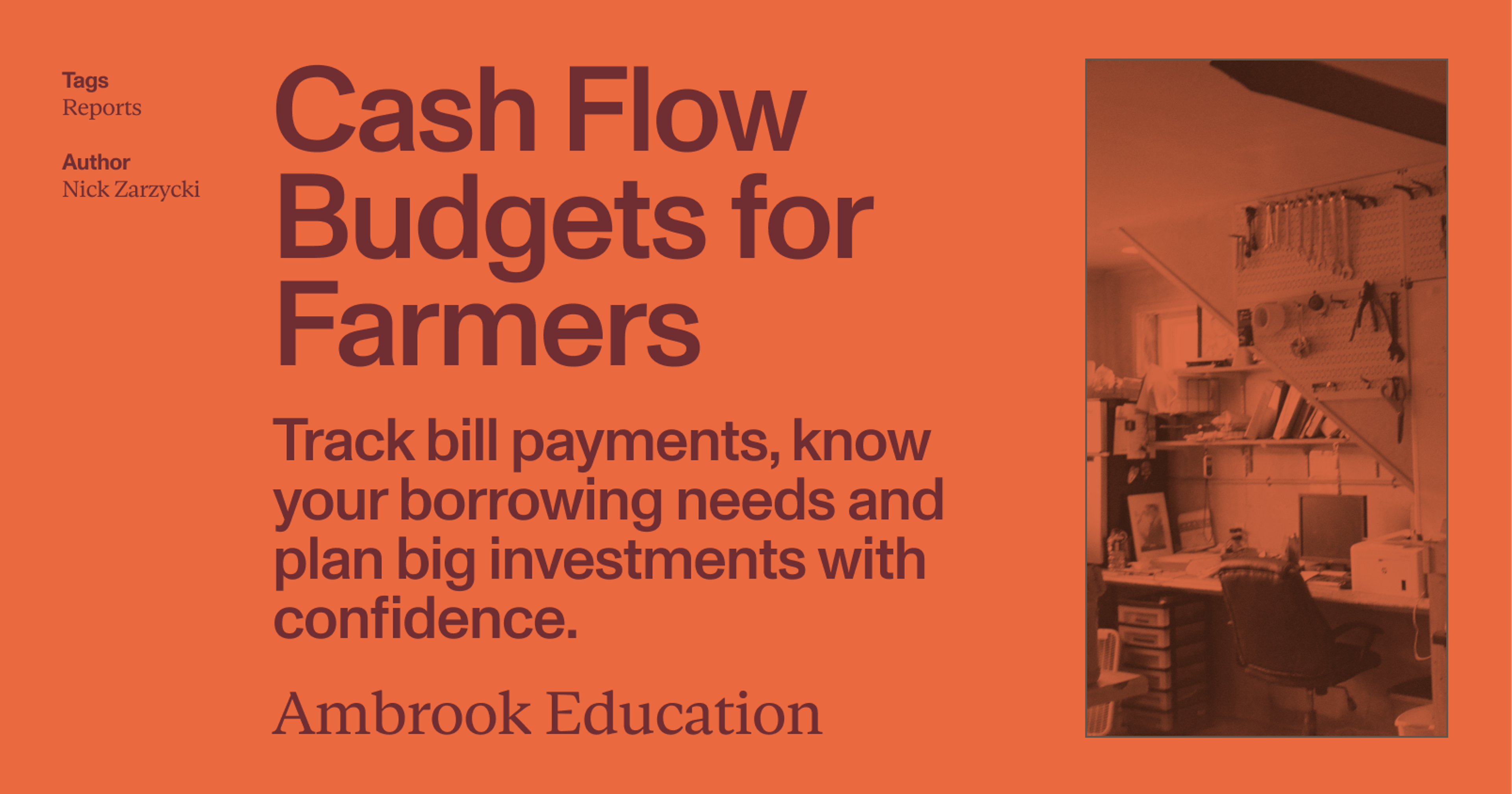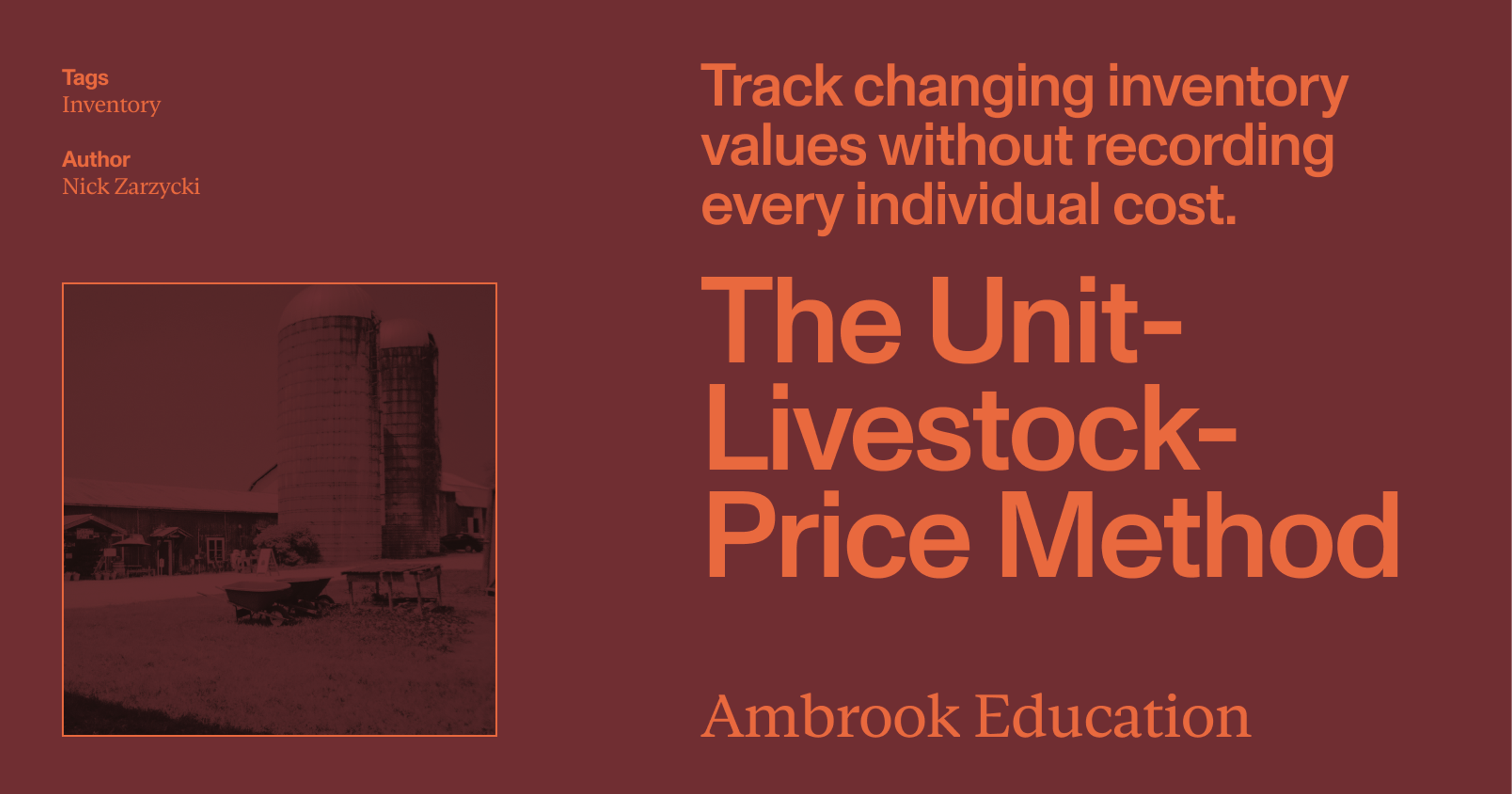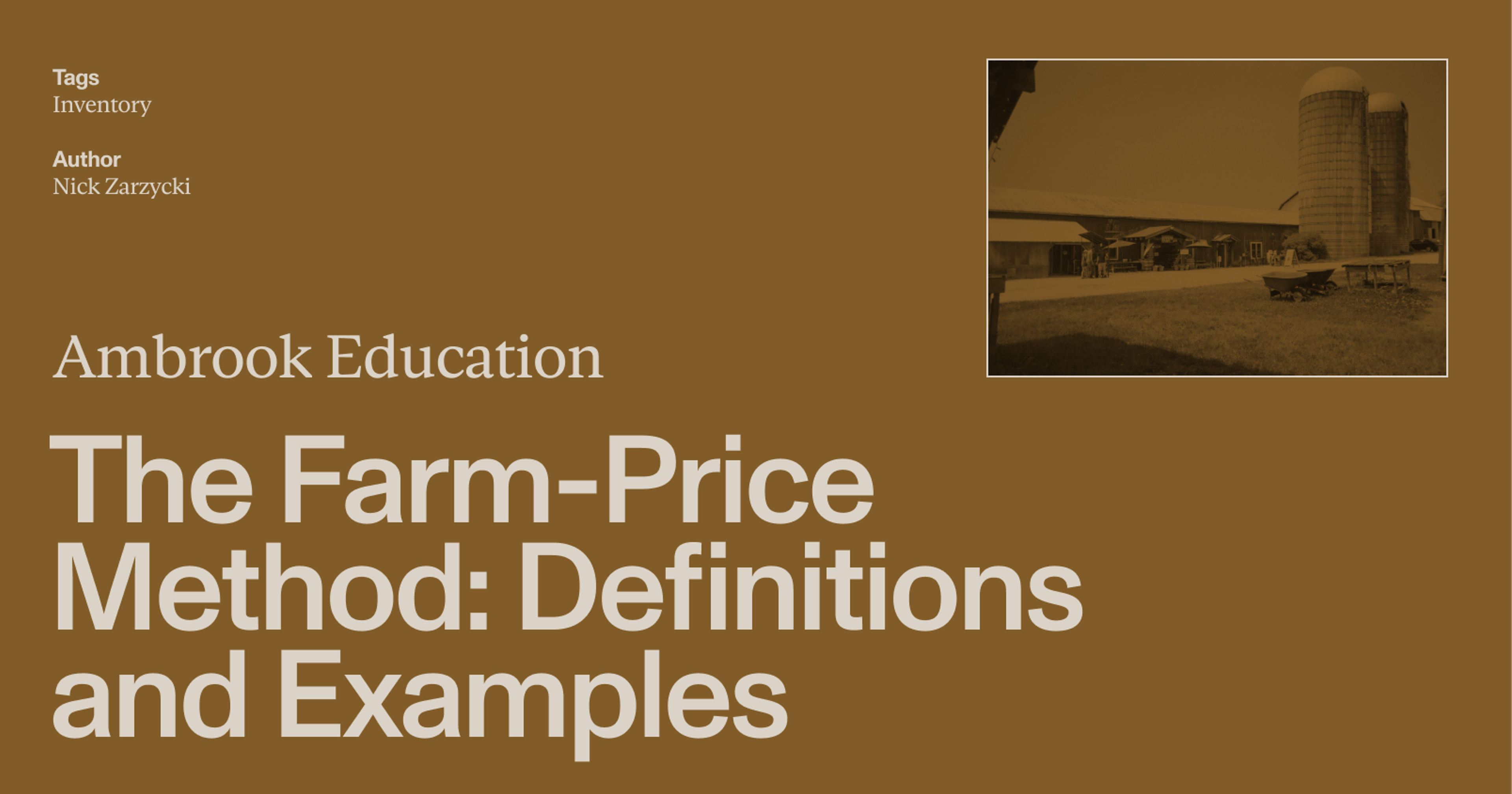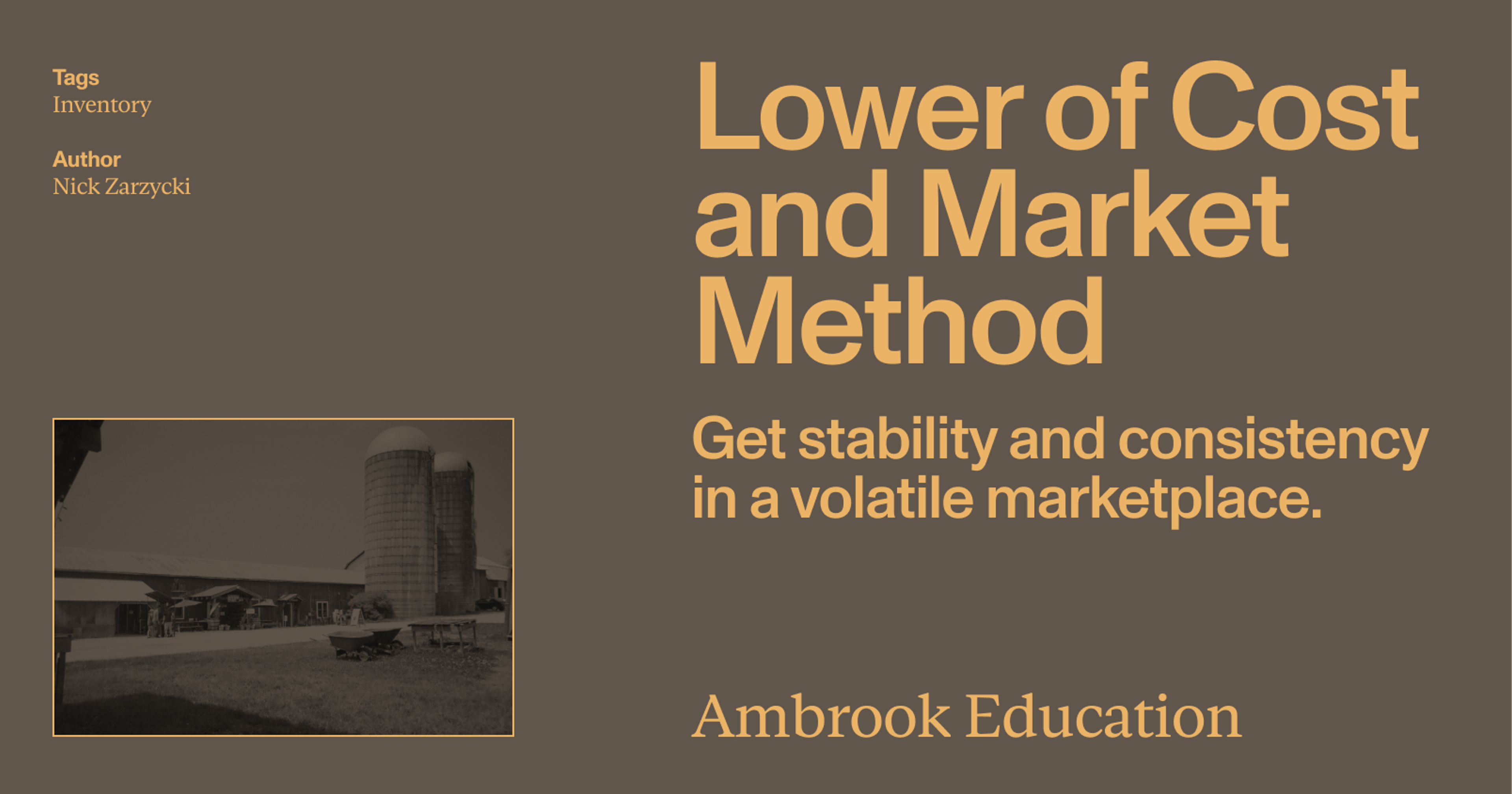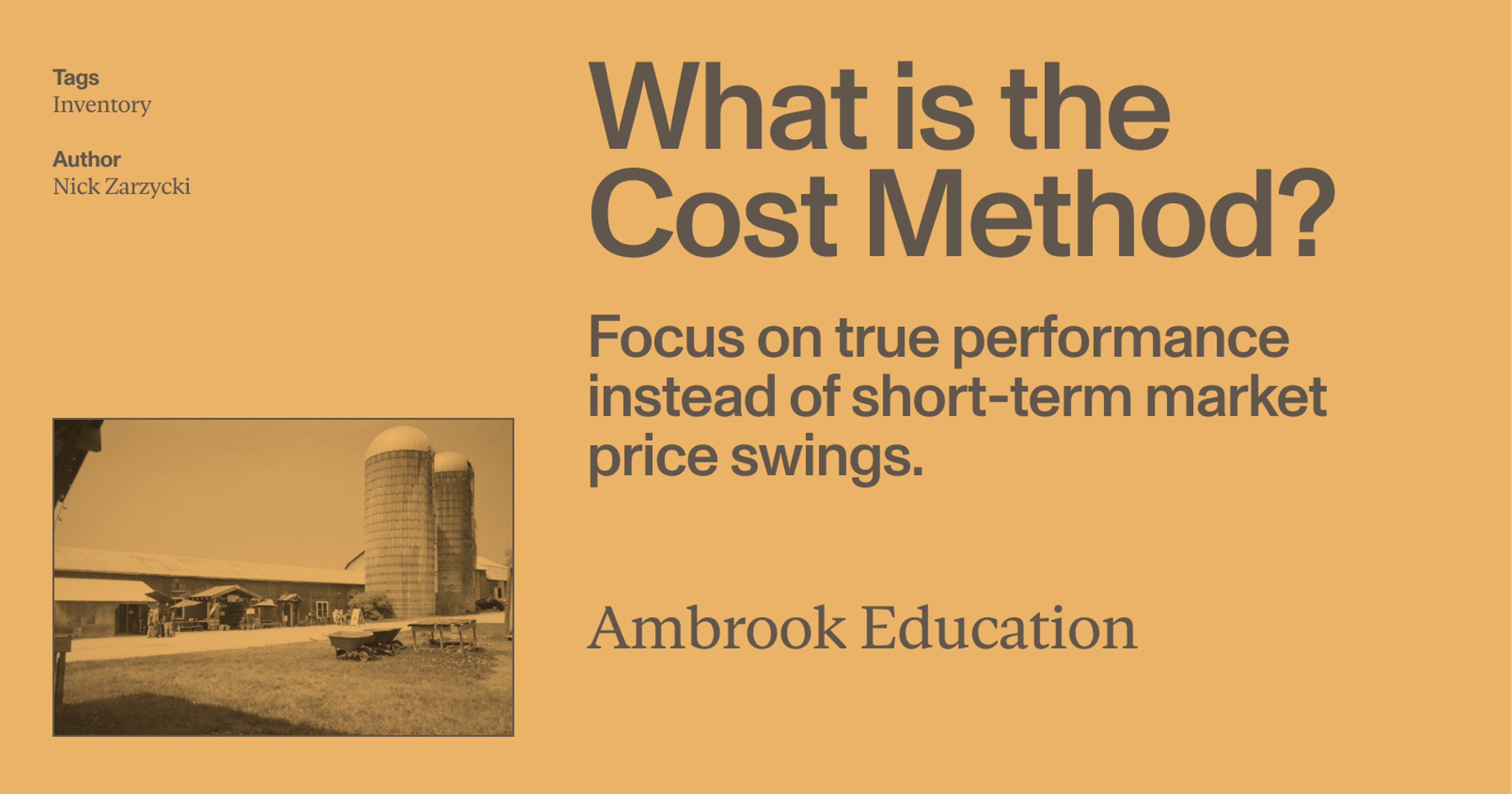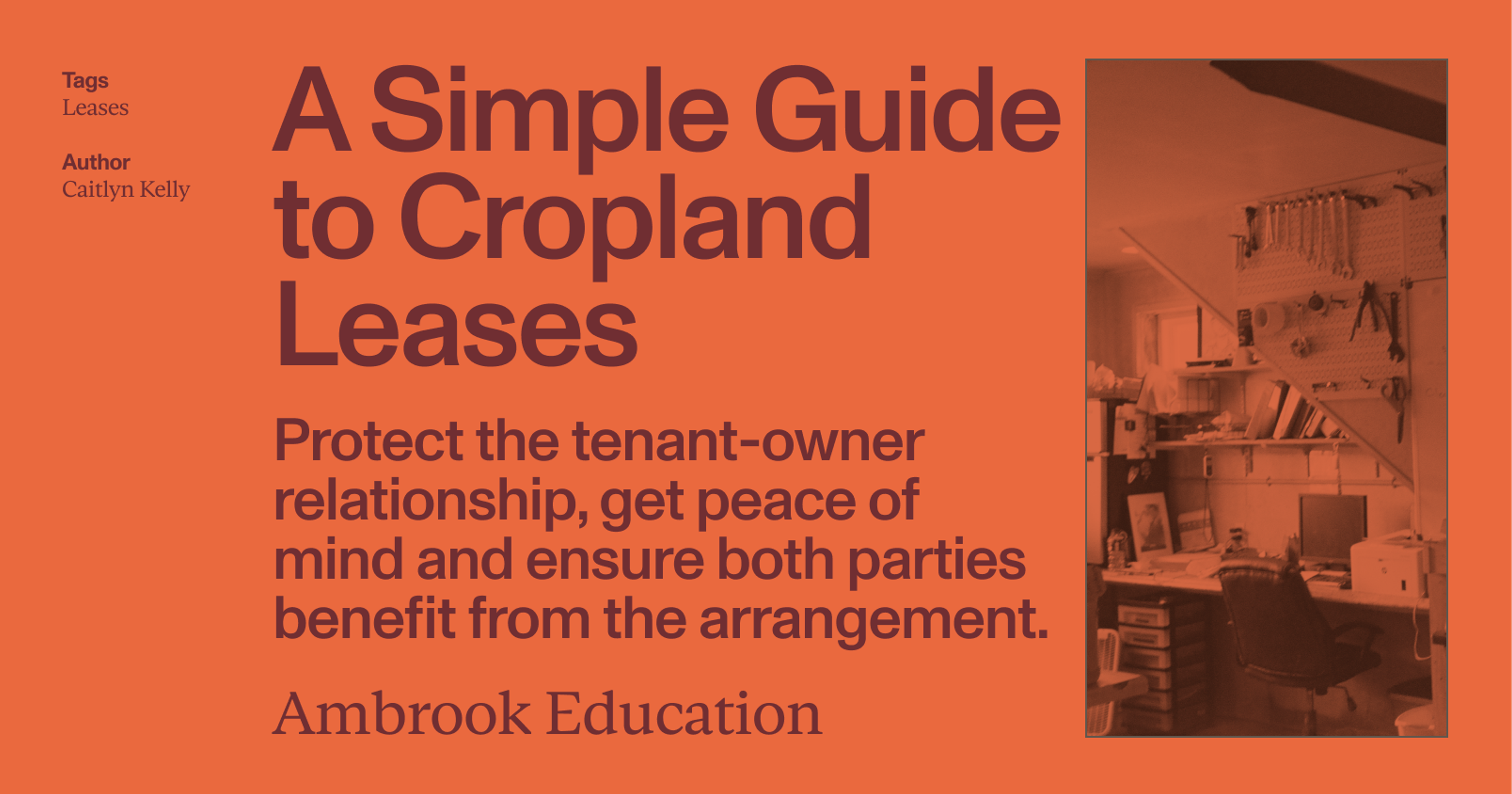Livestock insurance is an important safety net for farmers and ranchers, protecting livelihoods from unexpected losses, disease, disaster and other risks. Here’s how it works.
Livestock insurance protects your income and cash flow from unforeseen events. Those unforeseen events range from production issues—like illness, natural disaster, and failed forage crops—to market troubles like dips in commodities prices.
But before you buy livestock insurance for your farm or ranch, you need to make sure the expense is justified. Will the insurance package you’re considering give you the coverage you need? Will it provide a big enough payout if your income takes a hit?
There are many types of livestock insurance to consider, and many factors to take into account when purchasing each type. Here is an overview of how the different types of livestock insurance work, some key terms to understand, and how to decide if livestock insurance is the right choice for your operation.
What is livestock insurance?
Like other types of insurance, livestock insurance protects you in case of unexpected loss or damages. In this case, what you’re insuring is the income you earn from selling livestock or dairy products.
If your livestock or dairy operation doesn’t meet production goals, or if changes in the market prevent you from earning what you expected from sales, a livestock insurance policy steps in to make up the difference in the form of a payout (or indemnity).
Different policies are tailored to different types of livestock production. Livestock insurance isn’t consecutive; you can choose to insure livestock (or forage crops) for one year or production period, and choose not to the next.
Livestock insurance plans are subsidized through the US Department of Agriculture (USDA) to make premiums more affordable for farmers.
What does livestock insurance protect against?
Livestock insurance protects against two types of risk: market volatility and production risks.
Market volatility is the unpredictability of the markets where you sell your product. These are large scale macroeconomic factors that include seasonal price changes as well as regulatory changes.
Production risk is the risk every farmer undertakes when raising livestock. It includes any factor that could lower the total output of your operation. That includes the death of livestock—accidentally, from disease, from predation, or from natural disasters. But it also includes factors that prevent livestock from putting on weight or producing milk: low quality or lack of forage; disease; bad genetics; or pests like flies, ticks, and lice.
When should I buy livestock insurance?
You are the best judge of whether you need livestock insurance because you have the clearest insight into your farming or ranching operations and all the factors involved.
That being said, here are some examples of situations where farmers may buy livestock insurance:
In areas where drought often impacts forage production, or where drought is predicted for the growing season
When natural disasters like wildfires or flooding are likely to impact livestock production
During times of market instability when the sale price of commodities is rapidly fluctuating
When experimenting with a new breed or type of livestock, or new grazing management, and production output is hard to predict
After moving onto new pasture (e.g., with a grazing lease), when it may be difficult to predict production output or when unexpected factors may come into play
If you fail to buy livestock insurance when you need it, your income and cash flow could suffer. But if you buy livestock when you don’t need it, you could also end up paying premiums that cut into your bottom line.
Whatever your reasons for shopping for livestock insurance, make sure to carefully research your options and do the math before making a decision.
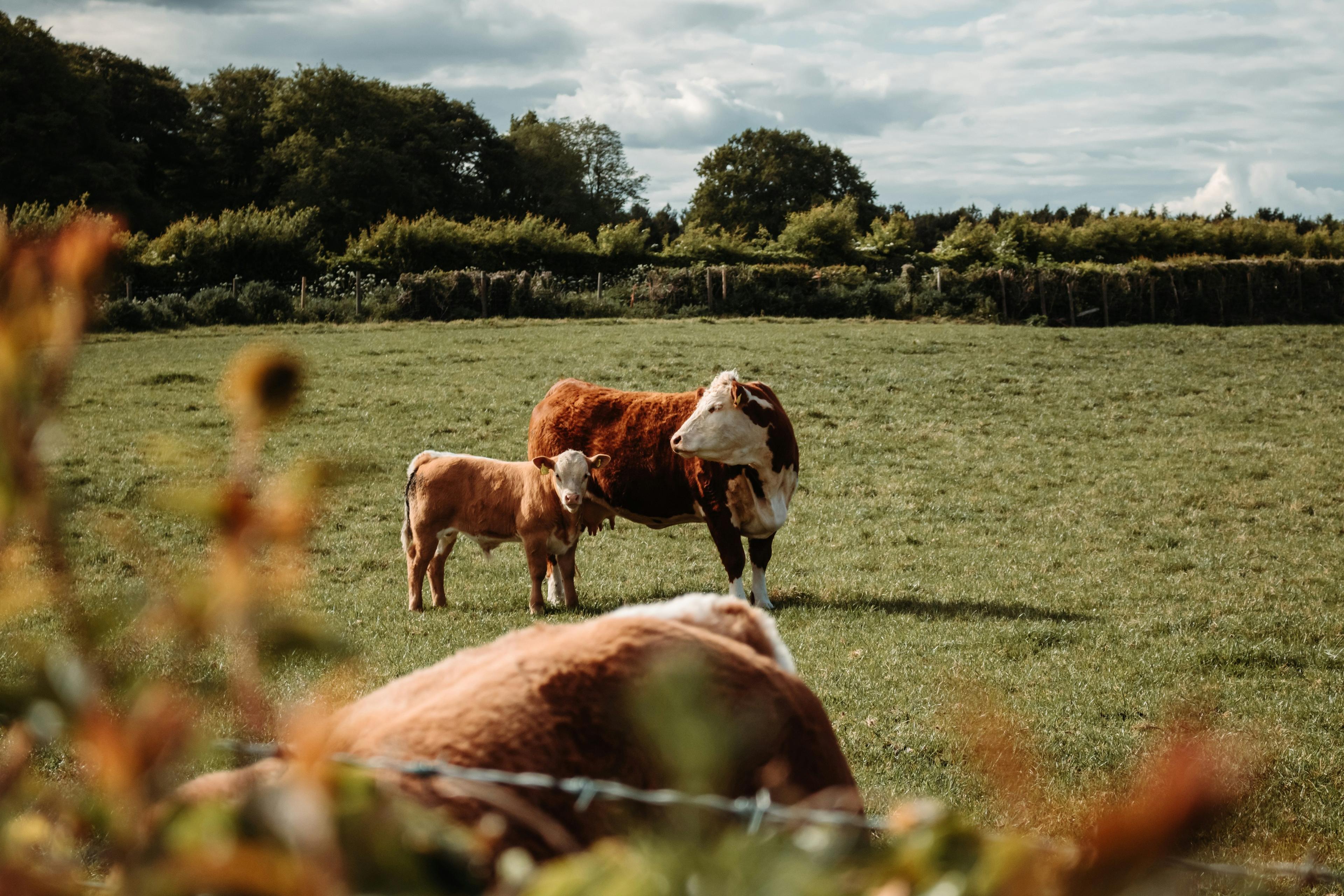
NighthawStudio on Unsplash
Livestock insurance key terms
Before you begin shopping for livestock insurance, make sure you’re familiar with these key terms:
Deductible: When coverage is triggered, the total amount you must pay out of pocket to cover damages before receiving a payout (indemnity).
Eligible cause of loss: Also called the coverage trigger, this is an event that triggers a payout (indemnity) from an insurance provider. Different types of insurance stipulate different coverage triggers.
Indemnity: The payout for a loss, meant to be the cash equivalent of a lost asset or loss of income.
Liability: This is the total value an insurer could pay out, or the maximum amount of coverage under the policy based on the farmer’s yield, revenue and coverage.
Premium: The cost of livestock insurance after subtracting subsidies.
Types of livestock insurance
There are five types of livestock insurance available to farmers and ranchers. Each offers different types of coverage.
This is an overview. Individual plans offer different coverage triggers, indemnities, premiums, and payment periods. Talk to an approved agent for help deciding which plan is right for you.
Livestock gross margin (LGM) insurance
LGM insurance protects against market volatility. It protects your livestock sales’ gross margin from shortfalls. In livestock sales, gross margin is the difference between the cost of feed and the revenue from a sale. It’s a measurement of your profit.
When you purchase LGM insurance, you are guaranteed a minimum gross margin. If, at the end of your insurance contract, the gross margin is less than that guaranteed by your LGM insurance, the insurer pays out an indemnity.
LGM insurance only guarantees a gross margin, and not a selling price. That’s covered by livestock risk protection (LRP) insurance, covered below.
Risks to animals, such as death or destruction, or risks to forage crops, are not covered by LGM insurance.
Livestock covered by LGM insurance
You can purchase LGM insurance to cover cattle, swine, or dairy revenue.
For each type of livestock, only certain types are covered. For instance, LGM insurance for cattle covers only calf-finishing or yearling-finishing operations. For swine, it covers only farrow-to-finish, feeder finishing, and segregated early weaned (SEW) finishing production.
Also, the coverage periods for livestock vary according to the type of livestock. Cattle and milk may be covered for two to 11 months into the future, while swine may be covered for two to six months.
Premiums for different types of livestock are calculated slightly differently based on type, but all premiums are based on commodities futures markets. Subsidies and deductibles also differ.
LGM insurance policies assume a certain feed quality and certain market weight for each type of livestock.
How to purchase LGM insurance
You can only purchase LGM insurance once per week, between market closing time on Thursdays at 9am Central Time and the beginning of the next trading day.
When you purchase LGM insurance, you indicate the months in which you intend to sell livestock and then buy coverage for that period. The month in which you make the purchase is not covered. So, if you purchase six months of coverage for your swine in March, coverage begins in April and ends in September.
As the policyholder, you’re responsible for submitting marketing reports to the insurer every time you sell livestock during the coverage period.
Premiums are due in the last month of the coverage period. Indemnities are also paid out after the last month of the coverage period. You can choose to have premiums deducted from your indemnities.
Livestock risk protection (LRP) insurance
LRP insurance protects against market volatility. LRP insurance is similar to LGM insurance, only instead of guaranteeing a minimum gross margin, LRP guarantees a minimum sale price.
When you purchase LRP insurance, you set a target weight at which you intend to sell livestock. Taking other factors into account, including the breed and sex of the animals, this target weight determines the expected selling price covered by the policy.
You also select how much of the selling price you want covered, ranging from 70% to 100 percent.
Livestock covered by LRP insurance
With LRP insurance, you can purchase coverage for feeder cattle, fed cattle, or swine. As with LGM insurance, details of each coverage type—including the specific categories of livestock covered (eg. steers vs. heifers)—vary.
How to purchase LRP insurance
You can purchase LRP insurance any day of the week during open market hours.
The premium you pay is based on the target weight, coverage amount, coverage period, and type of livestock. It’s calculated by the USDA Risk Management Agency (RMA). The RMA makes all its coverage costs public.
Indemnities are paid out at the end of the coverage period. They’re based on the difference between the actual selling price and the expected selling price covered by the policy. If livestock sells for more than the amount covered by the policy, no indemnity is paid out.
In order to collect an indemnity, you must submit a Notice of Probable Loss form to the insurer within 60 days of the policy’s end date. You should be prepared to provide proof of ownership or sales records. After you file a claim, indemnities are paid out within 30 days.
Subsidies vary according to the amount of coverage you purchase:
| Coverage level | Subsidy amount |
|---|---|
| 70% – 79.9% | 55% |
| 80% – 84.9% | 50% |
| 85% – 89.9% | 45% |
| 90% – 94.9% | 40% |
| 95% – 100% | 35% |
Weaned calf risk protection (WCRP) insurance
WCRP insurance is the only form of livestock insurance that lets you purchase protection either from market volatility or from production risks. Depending on the policy you choose, WCRP insurance can either guarantee a sale price or pay out an indemnity in the case of loss due to death from disease, predation, freezing temperatures, or other unforeseen events.
The WCRP program is available only to producers in Colorado, Nebraska, South Dakota, and Texas.
It covers beef calves from birth through weaning. The annual coverage period begins January 31st, and you have until August 1st to report calves and get coverage.
Your coverage ends either on
January 31st; or
The date of a calf’s weaning, death, sale, or backgrounding.
Types of coverage and subsidy levels
With WCRP insurance, you are able to choose one of the following policies:
Catastrophic Risk Protection
Yield Protection
Revenue Protection
Revenue Protection with Harvest Price Exclusion
Availability of each policy varies according to your location. Consult with an approved agent for details about each policy.
Subsidy levels vary according to the amount of coverage you purchase:
| Coverage level | Subsidy amount |
|---|---|
| 50% | 67% |
| 55% | 64% |
| 60% | 64% |
| 65% | 59% |
| 70% | 59% |
| 75% | 55% |
| 80% | 48% |
| 85% | 38% |
Catastrophic Risk Insurance coverage is fixed at 50% of anticipated yield or 55% of anticipated price. It is 100% subsidized, with no premium cost to the producer. However, you must pay a $655 administrative fee per county, regardless of the number of head you are insuring.
Annual forage insurance (AFI)
AFI protects against livestock production risk.
Specifically, it protects you against the loss of forage crops due to low precipitation. Rather than covering the gross margin or sale price of your livestock, it covers a major resource (forage) that contributes to your production output.
Annual precipitation is measured on a grid divided into 14 mile by 16 mile sections. The section covering your forage crop determines your annual precipitation for the sake of the AFI policy.
Coverage levels, productivity factors, and growing seasons
When you purchase AFI, there are three elements that affect your coverage:
Coverage level
Productivity factor
Growing season and intervals
Your coverage level is the amount of precipitation you’re covered for. This is based on historical averages. Coverage levels range from 70% to 90%, and the higher the coverage level, the higher your premium (and the higher likelihood of a payout). For instance, if you choose 90% coverage, then you receive a payout if annual precipitation is less than 90% of the historical average.
The productivity factor is the value of the forage crop you insure. This can range from 60% to 150%. The higher the productivity factor, the higher the payout in the event coverage is triggered. However, selecting a higher productivity factor also increases the premium you pay.
Your growing season and intervals consist of the amount of time your forage crop is insured for and how that time is divided up. The growing season lasts seven months, starting in the month the crop is planted. Within that time, you can insure the crop for four to six months. The coverage period is further split up either into three intervals of two months each (for six months’ total coverage) or into two intervals of two months each (four months’ total coverage).
Growing seasons and intervals can be tricky to calculate. And the best strategy for setting intervals will depend on your crop and local climate. For guidance, consult with an approved insurance agent.
Dairy revenue protection insurance (Dairy-RP)
Dairy-RP protects against both market volatility (low sale price) and production risks (low yield).
Coverage is quarterly, with the crop year beginning July 1st and ending June 30th. You can purchase Dairy-RP any time during the year, but coverage doesn’t start until the beginning of the quarter being covered.
If your revenue from dairy sales during the covered period is lower than the amount set by the policy—whether due to market volatility or low yield—then you receive a payout. This payout is equal to the difference between the revenue guaranteed by the policy and the actual revenue.
Only Class A and Class B milk is insurable.
Class Pricing vs. Component Pricing
You have two options for setting the expected revenue from dairy sales: the Class Pricing Option and the Component Pricing Option.
The Class Pricing Option uses a combination of Class III and Class IV milk prices to determine coverage and set the value of indemnities.
The Component Pricing Option uses the combined value of dairy components—butterfat, protein, and other solids—to determine coverage and the value of indemnities.
Protection factors, coverage levels, and subsidies
When purchasing Dairy-RP, you can select a protection factor ranging from 1.0 to 1.5, in 0.05 increments. This protection factor is the amount your guaranteed revenue is multiplied when calculating your payout. A higher protection factor results in higher premiums.
Coverage levels range from 80% to 95%, and subsidies are based on coverage level:
| Coverage level | Subsidy amount |
|---|---|
| 80% | 55% |
| 85% | 49% |
| 90% | 44% |
| 95% | 44% |
Can you use LGM-Dairy and Dairy-RP at the same time?
You can use both LGM insurance for dairy and Dairy-RP in the same crop year. But only one is valid at the time coverage is triggered.
If both are in place at the same time, the one with the earliest date of endorsement for the quarterly period is valid; the other insurance policy is null.
How to purchase Dairy-RP
You can purchase Dairy-RP through an approved insurance agent. When purchasing insurance, you can choose to buy multiple quarters of coverage, with different pricing options, protection factors, and coverage levels for each quarter.
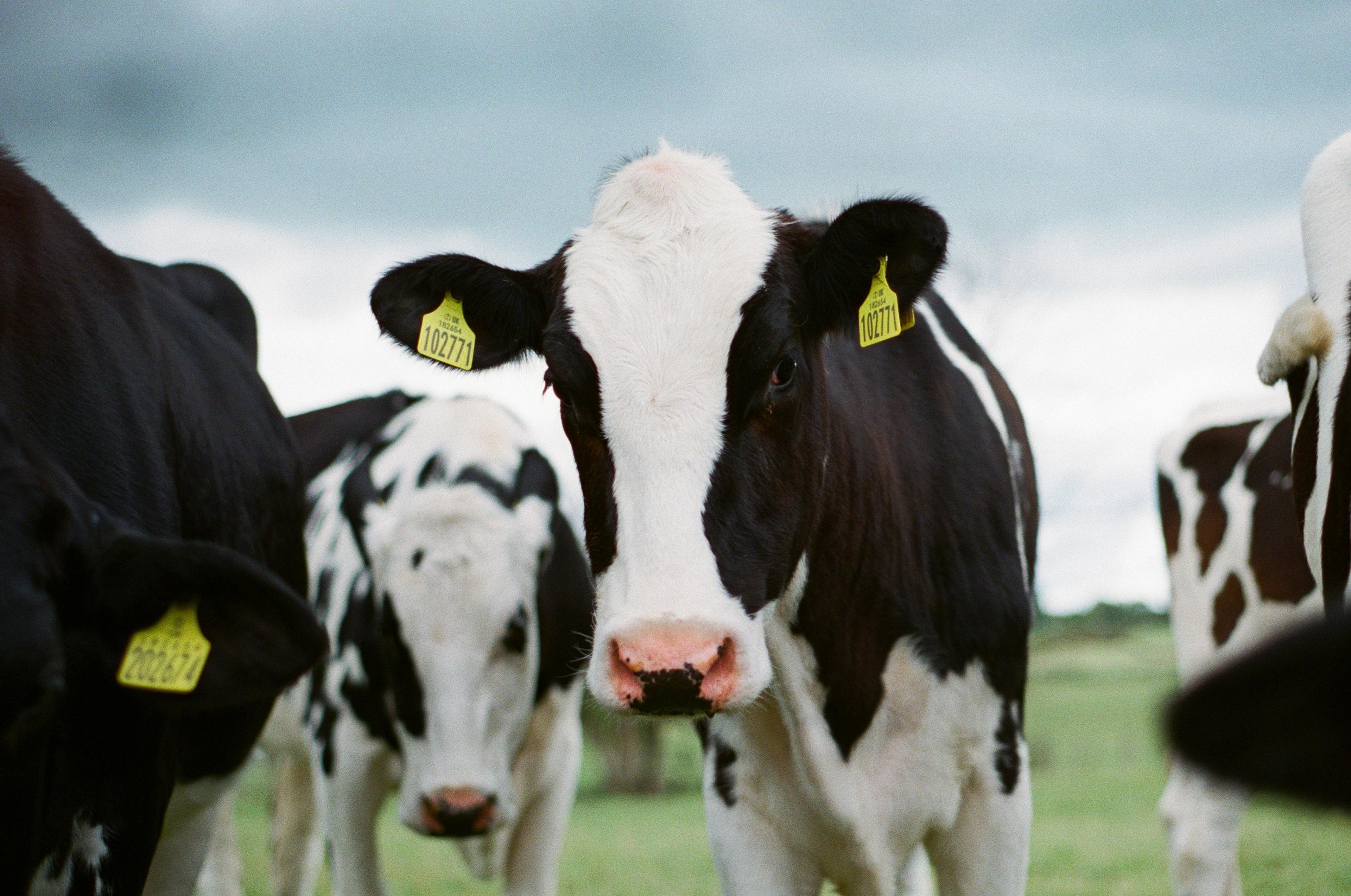
Jakob Cotton on Unsplash
Where do you purchase livestock insurance?
Livestock insurance is available exclusively from agents working for approved insurance providers (AIP).
All AIPs are approved by the USDA. There are 12 AIPs in total, serving producers in all 50 states.
You can view a list of AIPs, or search for individual agents with the USDA Agent Locator.
How to purchase livestock insurance
The USDA breaks down the process of purchasing livestock insurance into 13 steps.
Here’s a summary:
Step 1: Policy renewal and application. The RMA publishes documents each year listing the types of insurance and coverage available (the ‘initial offer’). You have several months between the initial offer and the closing date to apply for insurance.
Step 2: Sales closing. You complete your application for insurance before the sales closing date. Different types of insurance have different application requirements.
Step 3: Acceptance. Once you have correctly submitted your application, the insurance provider chooses whether to accept your application.
Step 4: Actual Production History (APH) database. Some plans require you to submit your past crop yields to the APH Database. This information helps the insurer determine your coverage.
Step 5: Insurance attaches. Once you have been approved by the insurer and submitted all the required information, your insurance comes into effect (‘attaches’) at the beginning of the crop year.
Step 6: Acreage reports. You submit an annual report including all insured and uninsured acreage for the year, including crop information where applicable.
Step 7: Summary of coverage. The insurer issues you a summary of coverage specifying the insured crop (or livestock) and the type of coverage.
Step 8: Premium billing. You are billed the cost of insurance. Different types of insurance have different billing schedules.
Step 9: Notice of loss. You report any losses to the insurer in order to receive an indemnity.
Step 10: Inspection. The insurer reviews your notice of loss and requests any further information—or schedules an inspection—if necessary.
Step 11: Indemnity claim. Once your notice of loss is approved, you receive a check for the indemnity. The date on which you receive the check will depend on the type of policy you have purchased.
Step 12: Production reporting date. Based on the schedule laid out by your insurance policy, you provide a report on your total production for the year.
Step 13: Program changes. The RMA works with producers to adjust their policies over the course of the year. When changes are made, they are published on the RMA website.
Ambrook puts a premium on your farm’s finances
With Ambrook handling your accounting, it’s easy to track insurance premiums and deduct them from your taxes. Plus, with time-saving bookkeeping automation features, automatically-generated financial reports, streamlined bill pay and invoicing, and other powerful accounting and financial management tools, Ambrook doesn’t just make expense and revenue tracking simple: it takes the guesswork out of running your business. Want to learn more? Schedule a demo today.
Want to learn more about Ambrook?
This resource is provided for general informational purposes only. It does not constitute professional legal advice and may not apply to your specific situation. Consult with professional legal counsel before making any decisions about business structure or liability.

